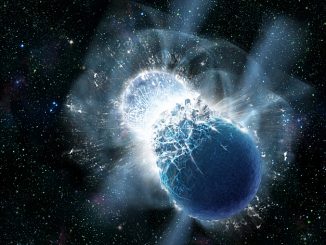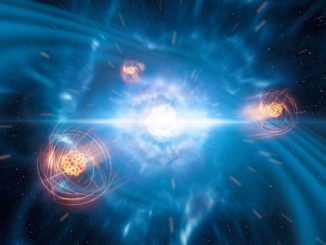
A new analysis, based on multi-messenger observations and the physics of sub-atomic interactions, shows a typical neutron star with 1.4 times the mass of the Sun would have a diameter of just 22 kilometres (13.7 miles), roughly the distance between Buckingham Palace in London and Heathrow Airport. The study was led by researchers at the Max Planck Institute for Gravitational Physics (Albert Einstein Institute, or AEI).
“Neutron stars contain the densest matter in the observable universe,” said Collin Capano, an AEI researcher in Hannover, Germany, and lead author of a study in Nature Astronomy. “In fact, they are so dense and compact that you can think of the entire star as a single atomic nucleus, scaled up to the size of a city.”
Badri Krishnan, leader of the research team at AEI Hannover, said in a news release “we find that the typical neutron star, which is about 1.4 times as heavy as our Sun, has a radius of about 11 kilometres. Our results limit the radius to likely be somewhere between 10.4 and 11.9 kilometres. This is a factor of two more stringent than previous results.”
Neutron stars are the collapsed cores of massive stars that ended their lives in supernova blasts. Not quite massive enough to form a black hole, such remnants represent matter in the densest state possible. How such extreme, neutron-rich material behaves is not yet clear, but mergers like one observed in 2017, known as GW170817, helped astronomers learn more about their physical properties.

The researchers used a model based on how sub-atomic particles are believed to interact at extreme densities. A “first principles” description of those nuclear reactions predicts a family of possible equations of state for neutron stars.
The researchers chose members of that family that were consistent with gravity wave observations of GW170817 from the LIGO and Virgo observatories and mass constraints based on observations of electromagnetic observations by other instruments.
“It’s a bit mind boggling,” said Capano. “GW170817 was caused by the collision of two city-sized objects 120 million years ago, when dinosaurs were walking around here on Earth. This happened in a galaxy a billion trillion kilometres away. From that, we have gained insight into sub-atomic physics.”



